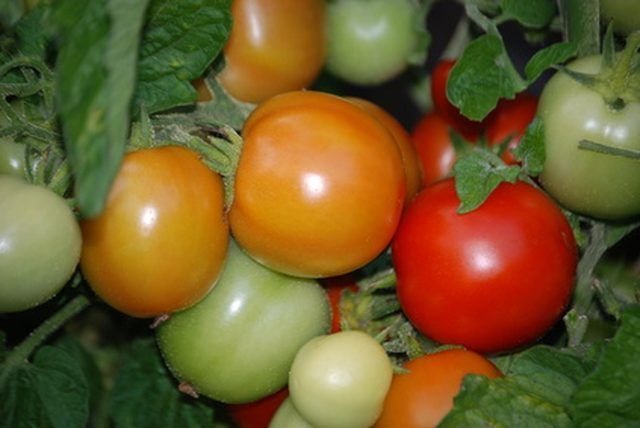Bulbs
Flower Basics
Flower Beds & Specialty Gardens
Flower Garden
Garden Furniture
Garden Gnomes
Garden Seeds
Garden Sheds
Garden Statues
Garden Tools & Supplies
Gardening Basics
Green & Organic
Groundcovers & Vines
Growing Annuals
Growing Basil
Growing Beans
Growing Berries
Growing Blueberries
Growing Cactus
Growing Corn
Growing Cotton
Growing Edibles
Growing Flowers
Growing Garlic
Growing Grapes
Growing Grass
Growing Herbs
Growing Jasmine
Growing Mint
Growing Mushrooms
Orchids
Growing Peanuts
Growing Perennials
Growing Plants
Growing Rosemary
Growing Roses
Growing Strawberries
Growing Sunflowers
Growing Thyme
Growing Tomatoes
Growing Tulips
Growing Vegetables
Herb Basics
Herb Garden
Indoor Growing
Landscaping Basics
Landscaping Patios
Landscaping Plants
Landscaping Shrubs
Landscaping Trees
Landscaping Walks & Pathways
Lawn Basics
Lawn Maintenance
Lawn Mowers
Lawn Ornaments
Lawn Planting
Lawn Tools
Outdoor Growing
Overall Landscape Planning
Pests, Weeds & Problems
Plant Basics
Rock Garden
Rose Garden
Shrubs
Soil
Specialty Gardens
Trees
Vegetable Garden
Yard Maintenance
Epsom Salts for Tomato Plant Blossom Rot
Epsom Salts for Tomato Plant Blossom Rot. Blossom rot, also known as blossom end rot, afflicts many garden-grown vegetables, but is most troublesome in tomatoes. Once a tomato shows the first symptoms, it's too late to save that fruit. Fortunately, quick action can usually prevent blossom rot in the next flush of tomatoes to form on that plant....

Blossom rot, also known as blossom end rot, afflicts many garden-grown vegetables, but is most troublesome in tomatoes. Once a tomato shows the first symptoms, it's too late to save that fruit. Fortunately, quick action can usually prevent blossom rot in the next flush of tomatoes to form on that plant. Because blossom end rot is a symptom of a calcium deficiency in the plant, Epsom salts, which supply calcium, can be part of the solution.
Identification
Blossom end rot first appears as a gray spot at the blossom end, opposite the stem of a tomato, usually just as the tomato begins to turn from dark green to light green. Soon after, the spot grows and takes on the appearance of a watery bruise. As the tomato continues to ripen, the bruised area grows, blackening and stunting the end growth of the tomato, resulting in a fully ripe tomato that is half or less it's original size and rotted through most of the remaining fruit, although the stem-end part of the tomato may appear dark red and healthy on the surface.
Causes
Blossom end rot is caused when there is a shortage of calcium within the tomato plant. The lack of that mineral prevents the plant from producing healthy fruit. Tomato plants acquire calcium from the surrounding soil; either the soil is calcium-poor or the plant cannot absorb existing calcium from the soil.
Significance
Once a tomato plant shows signs of blossom end rot, it will continue to produce stunted, rotted fruit unless the underlying problems are solved. Nothing can be done to reverse the rot on existing fruit, although it may be possible to stop the advance of the rot: On fruit which only exhibit the initial gray spot, it's possible that intervention will prevent further damage, resulting in a tomato that is almost entirely healthy, with only a small spot that can be trimmed away when the tomato is peeled for cooking or eating.
Prevention/Solution
Test your soil for both pH level and mineral content. Contact your local county extension office for information on how to do this, as it will vary from state to state, purchase a do-it-yourself kit from a local garden center. The lab report from either test will outline the PH and mineral content of your soil, and will recommend which soil amendments, and in what amounts, should be applied to your garden. If the test results indicate a calcium deficiency in the soil, apply a tablespoon of Epsom salts to the soil around the base of each of the afflicted tomato plants and scratch it into the soil. For faster absorption, dissolve 2 tablespoons of Epsom salts in one gallon of water and spray the solution directly onto the tomato plant foliage.
Misconceptions
Critical point is not how much calcium is in the soil, but how much calcium the tomato plant is able to absorb from the surrounding soil. If there has been insufficient rainfall (less than 1 inch per week), such as often happens in late July and August, when tomato plants are forming and ripening fruit, the plant will be unable to pull calcium from the soil because there's not sufficient water to deliver it through the root system. Supplement the rainfall with regular watering, if necessary, and apply mulch to the soil to conserve moisture. Make sure you moisten the soil before you add an amendment of Epsom salts, and keep the soil watered, to assist the plant in absorption of the nutrients.